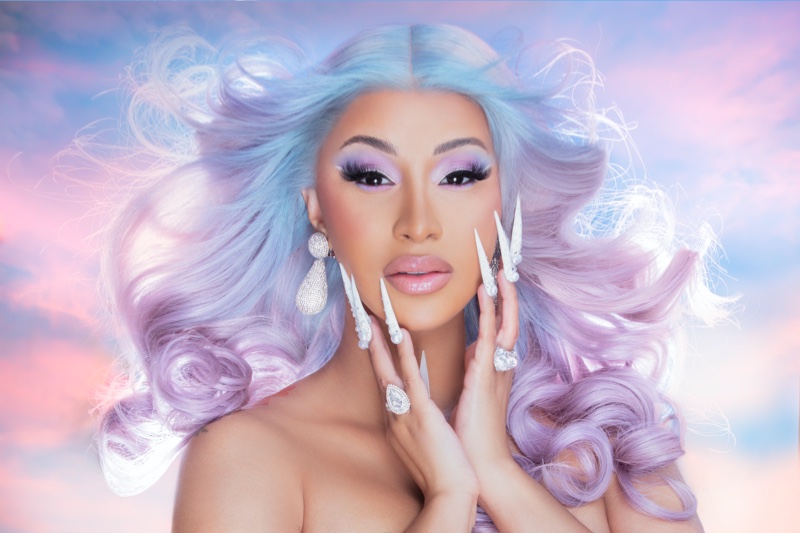
Marcellas Reynolds, a renowned entertainment journalist and fashion stylist, has debuted Supreme Sirens: Iconic Black Women Who Revolutionized Music, the first photography book to celebrate the impact of iconic Black female singers and musicians. This book is the latest in Reynolds’ notable Supreme series, which also includes Supreme Models and Supreme Actresses.
Supreme Sirens shines a spotlight on the legendary Black voices and styles of iconic women, from Ella Fitzgerald and Billie Holiday to Beyoncé and Rihanna. The tome features powerful stories of artists like Mary J. Blige, Mariah Carey, and cover star Missy Elliott, presented through stunning photographs that capture their spirit and influence.

In an exclusive interview with Fashion Gone Rogue, Marcellas Reynold shares the creative process behind this influential work, some of the challenges behind the project, and his connections with these musical pioneers.
I wanted Sirens to be alive and vibrant, like a glamorous fanzine or the tour book from your favorite concert. I want readers to feel these talented women’s passion for their craft.
Marcellas Reynolds
Supreme Sirens Interview

With so many influential Black female artists across different eras, how did you select which musicians to feature in this book?
Each of my books is a labor of love, starting with extensive research. Supreme Sirens began by delving into the lives and works of Black female Grammy winners, nominees, and Academy Award and Tony Award recipients.
Can you share insights into how you chose the photographs?
I chose each photo as the photo editor for the SUPREME book series. This role involved selecting the photos and negotiating all the clearances, licenses, and fees. Creating an art book is like a beautiful puzzle regarding cost and clearance—how cheaply can I get the photos, and what clearances do the photos require?
This process was challenging but rewarding, allowing me to visually bring the artists’ stories to life.

What do you hope the photographs convey about the artists and their impact on music?
I wanted Sirens to be alive and vibrant, like a glamorous fanzine or the tour book from your favorite concert. I want readers to feel these talented women’s passion for their craft.
Which stories or artists in Supreme Sirens resonate most personally with you, and why?
I wrote the last line in Supreme Sirens: ‘For Whitney Houston, Phyllis Hyman, Minnie Ripperton, and Tina Turner. Always.’ These are not just four of my favorite artists, but women whose stories have deeply resonated with me.
Each had challenges in their lives and careers that can teach others lessons. Their stories show talent isn’t enough; you must have determination and drive.

What were some of the most surprising challenges or revelations you encountered while researching and compiling Sirens?
After the success of my first two books, Supreme Models and Actresses, and the blockbuster success of my documentary, Supreme Models, I was surprised by the challenges I encountered while working on Sirens.
Many women featured in Sirens were hesitant to do interviews or approve photos, which made the research process more difficult. However, I persisted, I was determined to include their stories in the book. This experience taught me the importance of perseverance and the value of the stories I was telling.

How did the Foreword from Monica come about?
I interviewed as many of my book subjects as possible. These interviews were not just about gathering information but about connecting with the artists and understanding their experiences and perspectives.
Then, the interview that resonates with me most—expresses the book’s soul—becomes the Foreword. Monica’s interview, which spoke of sisterhood, faith in God, and belief in oneself, blew me away. Sisterhood, faith, and perseverance are the things that Sirens is about.
Since the release, what kind of feedback have you received from readers?
The public’s response to Sirens has been excellent. Several people have said it’s the most beautiful of my three books, and I’ve even heard it’s their favorite. However, there’s been a great deal of controversy. Some people have strong opinions about which artists were included in and left out of Sirens.
This controversy reflects the diversity and complexity of the artists I featured. I made the difficult decision to leave out a few notable women from each book, not because they weren’t deserving but because I wanted to leave space for future volumes and highlight the often-overlooked artists.

What do you hope readers, especially those unfamiliar with all the artists featured, will learn from Supreme Sirens?
What has become clear from these women’s careers is that Black female singers are always more than just singers. They are multi-hyphenate performers who create art where none existed before. For example, without Josephine Baker, there is no Grace Jones.
Josephine Baker was not only a talented singer but also a civil rights activist and a cultural icon. Her influence can be seen in the work of Grace Jones, who, like Baker, is known for her unique style and fearless approach to her art.
Without Grace Jones, there is no Beyoncé or Rihanna. And without Ma Rainey or Bessie Smith, there is no Lil’ Kim, Nicki Minaj, or Cardi B. These women paved the way for the artists we admire today, and their stories deserve to be told.

What did you enjoy most about working on this project?
The Sirens’ interviews are everything. Interviewing legends like Roberta Flack and Chaka Khan is a big deal. But it’s not just about the names; it’s about the stories they have to tell. Monica and Stephanie Mills brought me to tears during their interviews with their soul and strength.
Hearing Vanessa Williams detail her incredible career is my career high. These interviews have been a source of inspiration and learning for me, and I’m amazed and humbled by the incredible women I’ve interviewed for each book.





